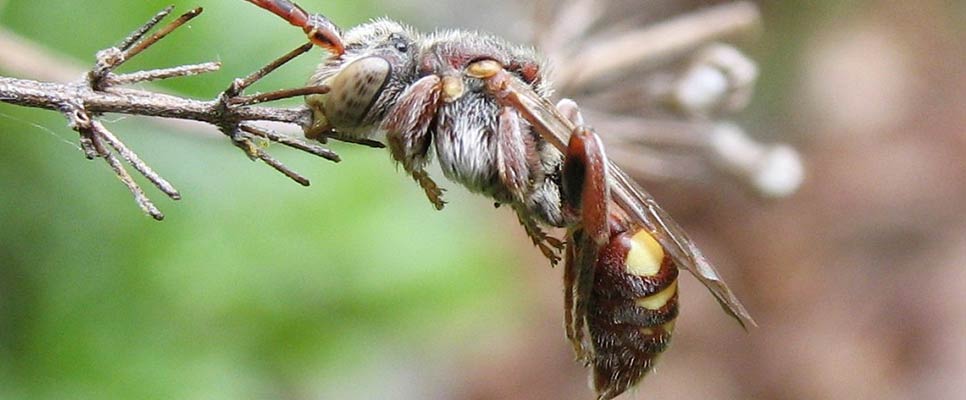Description:
Of the cuckoo bee species found in Sydney, this Neon Cuckoo Bee is arguably the most unusual. Its blue and black colouration is iridescent and makes it stand out sharply in the sunshine. Light brown wings with a violet sheen are present. In addition to woods and woodlands, cuckoo bees can thrive on the heath. Most of Australia is home to cuckoo bees. As cleptoparasitic species, cuckoo bees lay their eggs within the nests of other insect species. A female cuckoo will fly close to the ground to detect a specific scent released by a nest to locate one. Once she locates one, she may wait until the guest has left before going inside to lay eggs. She produces eggs that hatch into young that devour the host’s larva.

Appearance:
Cuckoo bees can have bodies that are extremely hard, almost Armor-like, with spines and pointed mandibles. Some can even pass for wasps. Given the circumstances they had their metamorphosis, even among members of the same species, they can differ in size. Since nectar gives them the strength they need for daily tasks, such as searching for those other bee nests to parasitize, they do visit flowers in search of them. Cuckoo bees will carry some pollen that electrostatically attracts them when visiting flowers, but we have not looked to see if they are effective at pollinating flowers.
Life Cycle:
The cuckoo bee does not construct its nests. Those bees place their eggs in those other bees’ nests, just as cuckoo birds adopt other species to rear their young. Typically, the female cuckoo bee follows the nest of a coloured bee and tries to enter it while the cell for the nest owner’s egg is being built. The female cuckoo bee also will put an egg in the cell if she can remain undiscovered while a female-coloured bee is ready to prepare shelter and meals for her children. The cuckoo bee egg hatches after the nest owner seals the cell, and the larva consumes all of the nectar and pollen food sources. Then it builds a cocoon and becomes a pupa.
Habit:
Zoologists find the cuckoo habit intriguing from both a genealogical and ecological perspective because it has independently developed in numerous bee groups. The brown-headed cowbird and other cuckoo birds that engage in brood parasitism are comparable to cuckoo bees. Parasitism occurs when one type of creature interacts with another and gains advantages while the other does not. For instance, cowbirds (brood parasites) lay their eggs within the nests of these other birds, and when they hatch, the host species nurtures the cuckoo bird as if it were one of their children. The cowbird typically outweighs the bird it parasitizes, giving it an advantage over other young birds. Cuckoo bees lay their eggs in other bees’ nests, and when the other bee’s egg hatches, the cuckoo bee’s egg is removed.
